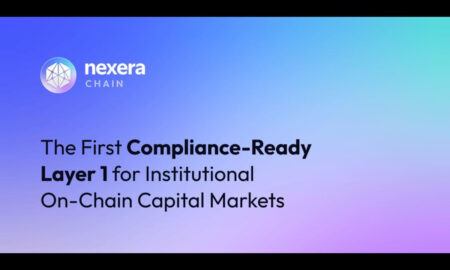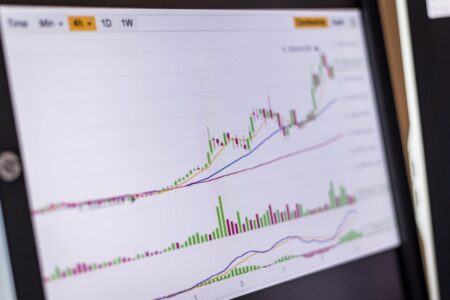On Monday (June 13), the day that the price of Bitcoin fell to as low as around $22K, Brad Garlinghouse, the CEO of Ripple, explained why his firm, which is a global leader in cross-border payment solutions, has “weathered the cyclical bear markets.”

Garlinghouse took to Twitter yesterday to remind people new to the crypto space that market downturns, such as the vicious one we are currently experiencing, “shall pass.”
He then went to list the main reasons for Ripple managing to survive multiple bear markets:
- “Having an experienced exec team that has been through the dot com bubble, 2008 financial crisis, 2018 crypto winter and more.“
- “Focusing on the long term – Ripple has been building enterprise products with long-term utility NOT speculation. These are products that solve problems today, not ones in search of a problem. FYI – Q2 ODL volume (well over $1B) already surpassed its target 3 weeks before EOQ.“
- “Operating with transparency – as a holder of XRP, we believe communication & transparency (including our Quarterly Markets Reports) are key to being a responsible stakeholder. We’ve been asking for regulatory clarity for years, and been upfront about what is/isn’t working.“
- “Paying attention – what’s happening now is not a small market gyration. We’ve been preparing for this w/ a significant cash balance, and thus can afford to keep hiring the best talent w/ the goal of 50% outside the US.“
He concluded his Twitter thread by expressing his confidence in the future of crypto:
“The market is likely going to shrink in the near term, but I and many others have every ounce of confidence that crypto will succeed in the future as an integral part of our global financial systems. Slow and steady wins the race.“
On May 25, the Ripple CEO shared his thoughts on a variety of interesting crypto-related topics while being interviewed by CNBC senior technology correspondent Arjun Kharpal at this year’s World Economic Forum (WEF) Annual Meeting in Davos, Switzerland.
Below, are a few highlights of Garlinghouse’s comments during this interview.
On 2017-2018 ICO Boom
“I think in some ways the ICO boom wasn’t particularly great for crypto, but you know some good things probably came of that, just like stablecoins. I said somewhat controversially around that period that I thought 99% of crypto — at the time there were 2,000, not 19,000 — would probably go to zero and that didn’t make me a lot of friends in the crypto world.
“Since then, I’ve been very wrong, I guess, because now there’s 19,000. So, we moved the other direction… It’s not clear to me whether there’s a place for all of these, but I also think as you go from first-generation technologies to second-generation, you get more specific use cases for specific types of solutions.“
On NFTs
“And look, I think we even have seen with what’s going to NFT market. Yet, the gas fees associated with NFTs are in some cases astronomical. And are the underlying layer one technologies able to support NFTs in the kind of first generation? And I think we’re finding probably not. And we need to find better technologies that can support NFTs because I don’t think NFTs are going away by any stretch.“
On Crypto Regulation
“I certainly have said — and I think that the team at Ripple has said for years — the industry lacks clarity and lacks certainty. The overwhelming majority of people working in the crypto industry I think are good actors that want to do right by regulators, but when the rules of the road aren’t clear, it’s very difficult to manage within that.
“And so for entrepreneurs and investors to participate in these markets, to invest in companies in this space, you want that clarity and certainty. In the United States, we have been clamouring for that… I personally, was at the U.S. SEC office office four or five times in the years leading up to their decision to file a lawsuit saying that XRP… [is] a security.
“You have other countries that demonstrate how out of step the United States is with the really the G20. I mean, we talk about Switzerland here, we talk about Singapore, we talk about the UK, Japan, even the UAE is way ahead in providing that clarity and certainty that I think allows investors and entrepreneurs to build on these technologies.“
On May 24, Maria Bartiromo, the anchor of “Mornings with Maria” on American cable TV channel Fox Business Network (FBN), interviewed the Ripple CEO.
During this interview, when Bartiromo asked Garlinghouse to share his thoughts on the crypto market, he replied:
“Well, two quick thoughts on that. There’s no question there’s been a lot of turbulence to the crypto market. I think if you zoom out, though, over the last two years, you have to remember the Bitcoin was at about $8,000 two years ago, and today it’s, as you just pointed out, around $30,000. So yes, in between there, it hit $60,000, but this is a new market.
“I think there’s certainly been a lot of excitement about what’s going on in the market, and then sometimes that excitement gets ahead of the reality. For Ripple, we’ve been very focused on how do we use these technologies to solve real problems for customers. And those are the kind of solutions that I think will scale, regardless of what’s happening to the turbulence and volatility of the market.“
She then asked Garlinghouse to comment on potential upcoming crypto regulation. He answered:
First, I’ll say here in Davos, when I came four years ago, crypto was considered a bad word. Today, that is dramatically different. And frankly, our elected officials that are here in Davao are some of the people speaking most aggressively about that.
“But there’s no question that regulation around crypto is still trying to find a solid footing, and finding the right posture for the United States. The United States has really been behind other G20 markets like the UK, like Switzerland, like Singapore. They’ve really been leading in establishing a framework that works for both investors as well as entrepreneurs, who are taking advantage of these new technologies and building the next generations of Google and Facebook.“
Garlinhouse was then asked to comment on Tether and the assets that back $USDT. He replied:
“As you point out, stablecoins have been in the news because that was one of the catalysts that really drove the market a couple weeks ago. An algorithmic stablecoin kind of melted down if you will. Tether is a considered a dollar-backed stablecoin. I’m not personally involved with it. So, I don’t know exactly how they are sharing those financials, but I think now more than ever the transparency that companies like Ripple have championed across the crypto industry are critical.
“That transparency for Tether, I think, is to really make sure the people participating, people buying, have access to whatever financial information they need to feel comfortable that ,in fact, it is dollar-backed…
“I think the whole industry needs to be more transparent. I think that applies to Tether. I think that applies to the whole industry. From the earliest days, Ripple and the XRP community, we’ve tried to lead by example. We’ve really tried to be the adults in the crypto room.
“And it’s the reason why I’ve come here to Davos and met with finance ministers from around the world, CEOs of banks around the world, to talk about how these technologies can actually solve real-world problems and reduce costs and improve the efficiency of particularly cross-border payments, an area that here at WEF they care a lot about and population that’s paying the most for remittance costs that can least afford it.“









